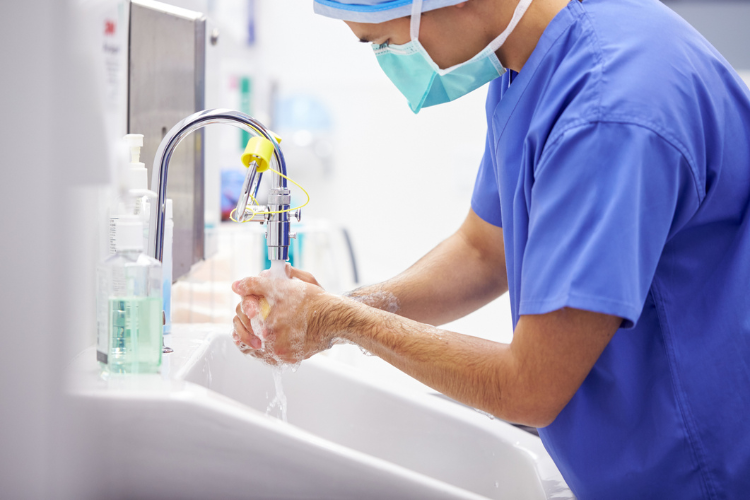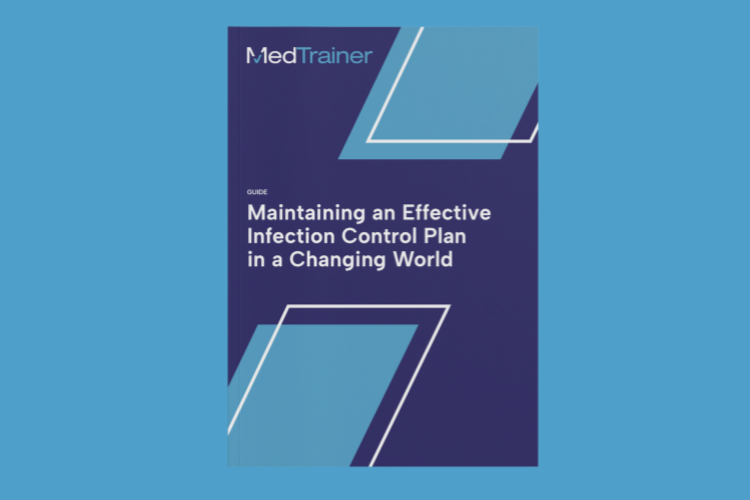Time and time again, we’ve witnessed how infection prevention and control saves lives. The COVID-19 pandemic has made this common knowledge. Yet, other infections continue to spread in healthcare facilities, which causes severe health problems for patients and staff.
According to the Centers for Disease Control and Prevention (CDC), healthcare-associated infections (HAIs) comprise an estimated 1.7 million illnesses and 99,000 associated deaths in the United States each year. To put a dollar figure on it, HAIs cost over $28.4 billion annually.
Implementing an effective infection control plan (ICP) is crucial for preventing and controlling the spread of HAIs in healthcare facilities. An ICP is a comprehensive set of policies and procedures designed to reduce the risk of transmission of infectious diseases among patients, healthcare workers, and visitors.
Take a deeper dive into infection control plans in this free ebook.
Hospital-Acquired Infections: Preventable With Proper Planning
Aptly named, hospital-acquired infections are a significant problem in U.S. healthcare systems. It’s estimated that 1 in 31 hospitalized patients suffers at least one healthcare-associated infection. Unsurprisingly, this leads to extended hospital stays, complications, and sometimes death. Common causes of HAIs include:
- Inadequate staffing or sharing staff outside of cohorts
- Improper use or poor maintenance of ventilators and catheters
- Contaminated HVAC and ventilation systems
- Improper use or lack of PPE around patients
- Not following aseptic protocols with patients, especially in surgery
- Congested hospitals with inadequate social distancing
- Reusing single-use supplies
- Incorrectly cleaning, sterilizing, and storing instruments
These preventable conditions can introduce unwanted bacteria, viruses, fungi, and other microorganisms to patients and staff. The ten most-prevalent hospital pathogens are:
- Coagulase-negative staphylococci
- Staphylococcus aureus
- Enterococcus species
- Candida species
- Escherichia coli
- Pseudomonas aeruginosa
- Klebsiella pneumoniae
- Enterobacter species
- Acinetobacter baumannii
- Klebsiella oxytoca
Is Your Department Immune to HAIs?
Hospital-acquired infections (HAIs) can occur in any part of a hospital, but certain areas are more susceptible to these infections than others. Patients in intensive care units (ICUs), surgical units, emergency departments, long-term care units, dialysis units, and neonatal intensive care units (NICUs) are at a higher risk of developing HAIs.
Most Common Hospital-Acquired Infections
- Urinary tract infections (UTIs) are the most common HAI and occur when bacteria enter the urinary tract, typically from catheter use.
- Surgical site infections (SSIs) can happen after surgery when bacteria enter the surgical site. They can cause fever, pain, and redness and may require additional treatment.
- Central line-associated bloodstream infections (CLABSIs) occur when bacteria enter the bloodstream through a central venous catheter. These infections can be serious and may require extended hospital stays.
- Ventilator-associated pneumonia (VAP) is a type of pneumonia that develops in patients who are on a ventilator by bacteria that enter the lungs through the ventilator.
- Bacteria such as Clostridium difficile (C.diff) lead to diarrhea, fever, and abdominal pain, telltale signs of a gastrointestinal infection.
Combatting Diseases in the Hospital With an Infection Control Plan
An infection control plan gives your staff a comprehensive approach to preventing and controlling infections. A well-designed plan can help combat the spread of diseases and protect patients, healthcare workers, and visitors from infections. Here are some critical elements of an effective infection control plan:
- Hand hygiene: Proper hand hygiene is one of the most important measures for preventing the spread of infections. Healthcare workers should wash their hands frequently and thoroughly with soap and water or use an alcohol-based hand sanitizer.
- Personal protective equipment (PPE): Healthcare workers should wear appropriate PPE, such as gloves, gowns, masks, and eye protection when caring for patients with infectious diseases.
- Environmental cleaning and disinfection: Proper cleaning and disinfection of hospital equipment and facilities are critical to prevent the spread of infections. Healthcare workers should use EPA-registered disinfectants and follow recommended cleaning protocols.
- Infection surveillance and reporting: Facilities should have a system for monitoring and reporting infections, including multidrug-resistant organisms (MDROs), to identify outbreaks and trends.
- Antibiotic stewardship: Appropriate use of antibiotics is essential to prevent the development of antibiotic-resistant infections. Hospitals should enact policies to ensure limited antibiotic use only when necessary and per clinical guidelines.
- Education and training: Healthcare workers should receive regular education and training on infection prevention and control measures to ensure they know best practices and adhere to established protocols.
- Patient and visitor education: Patients and visitors should be educated about the importance of hand hygiene, respiratory etiquette, and other infection prevention measures to help reduce the risk of infection transmission.
By implementing a comprehensive infection control plan, hospitals can help combat the spread of diseases and protect the health and safety of everyone in the healthcare environment.
Infection Prevention and Control Courses
At MedTrainer, reducing HAIs in your hospital begins with compliance. Keep your staff abreast of the latest HAIs and prevention information with our specially designed courses.
Antibiotic Resistance and Stewardship: Key Considerations for Reducing HAIs and SSIs
Learn about the growing problem of antibiotic resistance and what providers can do to reduce the risk of surgical site infections (SSIs) and support the appropriate use of antibiotics.
Airborne & Droplet Disease Transmission
In this course, we discuss the difference between airborne and droplet transmission of diseases and how to take the necessary precautions against both.
The Role of Decolonization in the Prevention of Surgical Site Infections
Understand the role of sterilization packaging and quality assurance procedures. This course includes instrument reprocessing, sterilization wraps, peel pouches, and containment devices. We also cover what to do in the event of a sterilization failure.
High-Level Disinfection
You’ll see the importance of compliance with disinfection and sanitization best practices related to instrument reprocessing. The course gives you an overview of the high-level disinfection process.
Making the Most of Your PPE Supplies
We’ll cover the CDC’s guidelines for optimizing PPE supplies, different strategies, and purposes, and in this course, we will break down the proper use of the PPE Burn Rate calculator.
Preventing Infections and Ensuring Compliance With MedTrainer
MedTrainer is more than just an infection control solution. We offer many services to help healthcare organizations improve their operations and stay compliant. Our medical staff credentialing software streamlines the enrollment process and simplifies document tracking, saving your organization time and effort. Additionally, we provide a variety of compliance tools including incident reporting software, SDS management, safety plan templates, and more.
Let us show you how our comprehensive collection of software and services can enhance the efficiency of your institution’s operations. Contact us today to learn more.

